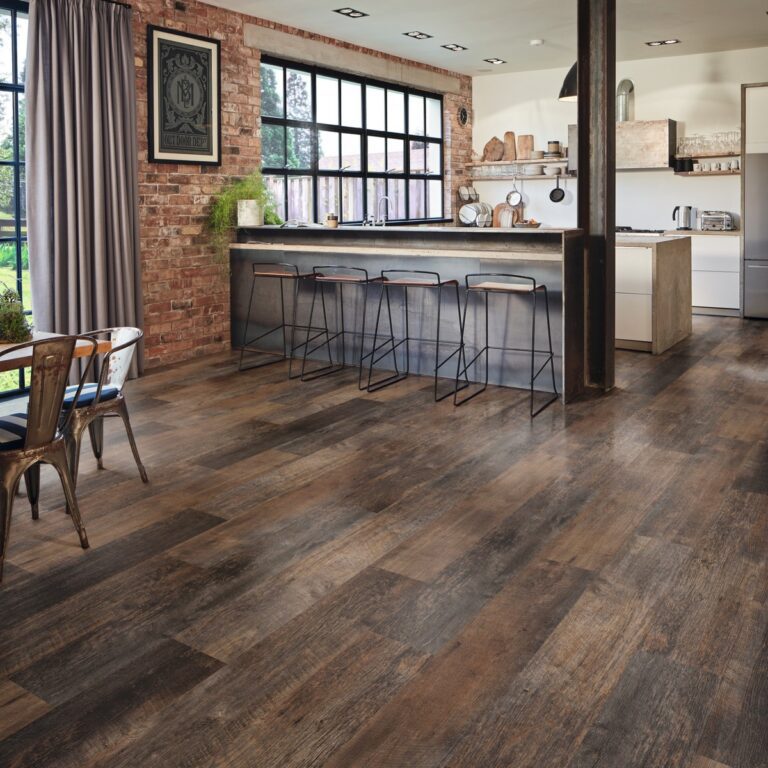Are you considering installing underfloor heating in your home but wondering, “Can you have carpets with underfloor heating?”
This article explores the world of underfloor heating, the types available, and the benefits it offers. We also discuss the best types of carpets suitable for use with underfloor heating, as well as the precautions you should take when installing them.
So, can you put carpet over underfloor heating? Get the discussion below and be ready to transform your home into a cosy and energy-efficient haven!
Can You Have Carpets with Underfloor Heating?
Can you put a carpet on underfloor heating? Yes, installing carpets with underfloor heating is a common practice that can bring warmth and comfort to one’s home. It is essential to understand the compatibility between carpets and underfloor heating systems to ensure efficient heating and safety.
When selecting carpets for underfloor heating, opt for thinner options as they allow heat to dissipate evenly throughout the room, maximising the system’s efficiency. Wool carpets are particularly suitable as they are excellent insulators and retain heat well. Carpets act as insulators, helping retain warmth in the room, lowering energy consumption and reducing heating costs.
Do you need underlay for a carpet with underfloor heating? Yes, during installation, it’s crucial to use a carpet underlay specifically designed for underfloor heating systems to avoid overheating and potential damage. Regular maintenance, including vacuuming to prevent dust build-up, is important to keep the system running smoothly and maintain air quality.
What Is Underfloor Heating?
Underfloor heating is a modern heating system that involves installing heating elements beneath the floor surface. This system eliminates the need for traditional radiators and provides efficient heat distribution throughout the room.
Underfloor heating systems work by circulating warm water through pipes or electric heating cables placed beneath the floor. There are two main types of underfloor heating systems: water-based (hydronic) and electric. Water-based systems use hot water from a boiler, while electric systems rely on electric coils. The installation process involves either laying the pipes within a screed or directly onto insulation boards, depending on the system chosen.
Underfloor heating offers numerous advantages, such as eliminating heating pockets, reducing heat loss, and creating a more comfortable environment by ensuring even heat distribution across the entire floor surface.
How Underfloor Heating Work
Underfloor heating works by circulating warm water or electricity through pipes or heating mats installed beneath the floor. A thermostat controls the temperature, while proper insulation ensures heat retention and energy efficiency.
The mechanism of underfloor heating involves a process where either warm water or electricity flows through a network of pipes or mats placed beneath the flooring surface. This system functions to evenly distribute heat, creating a comfortable atmosphere within the room. The thermostat plays a crucial role in monitoring and adjusting the temperature to maintain the desired level of warmth.
Insulation is vital for optimising the efficiency of underfloor heating. It helps to prevent heat loss by trapping the warmth within the floor structure, thus reducing energy consumption and ensuring a consistent temperature output. By combining a well-regulated thermostat and effective insulation, underfloor heating systems work efficiently to provide a cosy and cost-effective heating solution for indoor spaces.
The Types of Underfloor Heating
There are primarily two types of underfloor heating systems: electric underfloor heating and hydronic underfloor heating. Each system has its unique features and benefits, catering to different heating needs and preferences.
Electric underfloor heating systems operate by running electric cables or heating mats underneath the floor surface, emitting heat directly into the room. These systems are known for their quick response time and ease of installation, providing rapid warmth when needed.
In contrast, hydronic underfloor heating systems use a network of water pipes to distribute heat throughout the floor, utilising hot water from a boiler or heat pump. Regarding energy efficiency, hydronic systems are generally considered more energy-efficient, as they can work at lower temperatures and typically have lower operating costs.
On the other hand, electric systems may be more suitable for smaller areas or specific rooms where heating needs are intermittent.
In terms of installation costs, electric underfloor heating systems tend to be more affordable upfront since they require less labour and materials. Hydronic systems might offer lower long-term operating costs due to their efficiency. Maintenance-wise, electric systems are easier to maintain as they have fewer components that can malfunction compared to hydronic systems.
The Benefits of Underfloor Heating
Underfloor heating provides several benefits, including enhanced energy efficiency, uniform heat distribution, and space-saving design. This heating system offers a comfortable and cosy environment while reducing energy consumption.
1. Energy Efficiency
One of the primary benefits of underfloor heating is its energy efficiency, as it operates at lower temperatures than traditional radiators, resulting in reduced energy consumption and lower utility bills.
2. Comfort and Even Heat Distribution
Underfloor heating offers exceptional comfort by providing consistent warmth across the entire floor surface, eliminating cold spots and ensuring a cosy environment in all rooms.
3. Space-saving
Underfloor heating systems are space-saving solutions that eliminate the need for bulky radiators, allowing greater flexibility in room layout and interior design.
The Types of Carpets
There are various types of carpets available in the market, ranging from natural fibre carpets like wool to synthetic fibre options. Each type of carpet offers unique characteristics and benefits that are suitable for different rooms and preferences.
1. Natural Fibre Carpets
Natural fibre carpets, such as wool carpets, offer excellent durability, insulation, and a luxurious feel underfoot. These carpets have varying tog ratings, indicating their thermal insulation properties.

See product: Victoria Carpets Natural Co-ordinates Canyon
2. Synthetic Fibre Carpets
Synthetic fibre carpets are popular for their affordability, stain resistance, and ease of maintenance. These carpets are ideal for high-traffic areas and rooms where spillages are common.

See product: Cormar Carpet Apollo Comfort Fjord Blue
Can You Have Carpets with Electric Underfloor Heating?
Electric underfloor heating is compatible with various types of carpets, including those made from natural fibres and synthetic materials. When installing carpets over electric underfloor heating, it is essential to use suitable underlay for heat conductivity and efficiency.
For carpets made from natural fibres such as wool or cotton, it is advisable to opt for thinner underlay to allow better heat transfer. On the other hand, synthetic carpets like nylon or polyester work well with slightly thicker underlays for added comfort.
Choosing the correct underlay plays a pivotal role in maximising the benefits of electric underfloor heating, ensuring even heat distribution across the entire floor surface. It also helps in reducing energy consumption by allowing heat to rise efficiently through the carpet.
When installing carpets over electric underfloor heating systems, it is recommended to use a low thermal resistance underlay to prevent insulation. Avoid thick, dense underlays that may block the heat from reaching the surface.
Can You Have Carpets with Hydronic Underfloor Heating?
Hydronic underfloor heating systems are suitable for carpeted floors, offering efficient heat distribution and comfort.
When layering carpets over hydronic underfloor heating, the carpet’s thickness plays a vital role in how effectively the heat is emitted into the room. Opt for carpets with lower thermal resistance to ensure a seamless transfer of warmth. Choosing a carpet with good thermal conductivity can enhance the system’s efficiency by allowing the heat to easily pass through the material.
The Best Carpets for Underfloor Heating
The best types of carpets for underfloor heating include low-pile carpets, carpet tiles, and wool carpets. These options offer excellent heat transfer properties, durability, and comfort, making them ideal choices for homes with underfloor heating systems.
Low-pile carpets are known for their tight construction, which allows heat to flow efficiently from the floor to the room. They are durable and provide a sleek, modern look.
Carpet tiles are a versatile option that can be easily replaced if damaged, offering both practicality and style.
Wool carpets, being a natural fibre, are excellent insulators and help to retain heat, creating a cosy atmosphere. They are soft to the touch, adding an extra layer of comfort to any room.
a. Low Pile Carpets
Low-pile carpets are recommended for underfloor heating systems due to their thin construction, which allows efficient heat transfer from the floor. These carpets are suitable for rooms where maintaining consistent warmth is essential.
The thin construction of low-pile carpets ensures that heat can easily penetrate through the carpet and reach the surface of the floor, making them perfect for underfloor heating systems. This feature helps in maximising the effectiveness of the heating system by allowing it to operate more efficiently. Low-pile carpets have excellent heat conductivity, which means they can efficiently transfer heat from the floor to the room, creating a comfortable and cosy environment.

See product: Cormar Carpet Inglewood Saxony Autumn Gold
b. Carpet Tiles
Carpet tiles offer versatility and convenience for underfloor heating applications, allowing for easy replacement of damaged sections. These modular carpet options are suitable for various room layouts and can enhance the aesthetic appeal of the space.
One significant advantage of using carpet tiles with underfloor heating systems is their flexibility. Since they come in individual pieces, they can be easily rearranged or replaced without disrupting the entire floor.
The ease of installation is another key benefit. Carpet tiles are simple to lay down, especially in comparison to traditional broadloom carpeting, making them a popular choice for DIY projects.
The design possibilities with carpet tiles are nearly endless. From vibrant colours to intricate patterns, these tiles allow for a high level of customisation to suit any room decor.

See product: Burmatex Go To Coal Grey Stripe
c. Wool Carpets
Wool carpets are a luxurious and sustainable choice for underfloor heating, providing excellent insulation and comfort. These carpets are known for their thermal properties and soft texture, creating a cosy ambience in living spaces.
One of the key benefits of wool carpets in underfloor heating setups is their exceptional thermal insulation. Wool naturally retains heat, creating a warm and inviting atmosphere in any room. This insulation property not only helps maintain room temperature but also contributes to energy efficiency and reduces heating costs.
Wool carpets are a sustainable option, as wool is biodegradable and renewable. By choosing wool carpets, you are making an eco-friendly choice for your home decor. Plus sustainability, wool fibres also have natural stain resistance and durability, ensuring longevity and easy maintenance.
When paired with underfloor heating systems, wool carpets enhance the overall warmth and comfort of interiors. The combination of underfloor heating and wool carpets provides a luxurious underfoot feel, keeping your feet warm and cosy during colder months. This seamless integration not only adds a touch of elegance to your home but also makes it a comfortable retreat all year round.

See product: Cormar Carpet Southwold Aldeburgh Ash
d. Berber Carpets
Berber carpets are a durable and stylish choice for underfloor heating systems, offering resilience and aesthetic appeal.
These loop-pile carpets provide a cosy and inviting surface for both residential and commercial spaces.
Their flat, dense weave makes them ideal for rooms with underfloor heating, as they retain heat effectively without compromising on comfort.
Berber carpets come in a range of colours, patterns, and textures, allowing for seamless integration into various room settings.

See product: Cormar Carpet Natural Berber Twist Elite Platinum
The Precautions to Take When Installing Carpets with Underfloor Heating
When installing carpets with underfloor heating, it is crucial to consider factors such as proper underlay selection, carpet thickness, and heat conductivity. Care must be taken to prevent overheating and ensure efficient heat distribution throughout the room.
One of the key precautions to keep in mind when laying carpets over underfloor heating systems is the selection of suitable underlay materials. Underlay acts as a crucial barrier between the carpet and the heating system, providing insulation and preventing excessive heat transfer. Opt for underlays specifically designed for underfloor heating, ensuring they allow heat to pass through without inhibiting its flow.
It is vital to monitor and regulate the heat levels of the underfloor heating system once the carpets are installed. Ensure that the temperature settings are appropriate to avoid any potential damage to the carpet fibres due to overheating.
So, for the question, “Can you have carpets with underfloor heating?,” the answer is YES. But, it’s important to choose the right type of carpet and take precautions during installation.
At TEKA Flooring, we understand the importance of finding the ideal carpet to complement your underfloor heating system. With our wide selection of quality carpets, you can trust that there’s a perfect match for your needs.
Our knowledgeable staff at TEKA Flooring is here to guide you every step of the way, ensuring that you select a carpet that not only adds warmth and comfort to your space but also works seamlessly with your underfloor heating system. Visit TEKA Flooring today and let us help you make the right choice!
Read also:

































